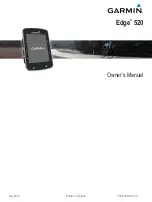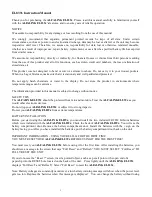
Connecting the Sirius to external Midi-devices:
Now to the MIDI-connections:
Example 1: Synthesizer (Keyboard)
Example 2: Expander
This example is very simple.
It allows you to play the
sounds of the Sirius using an-
other keyboard or synthe-
sizer. This can be useful
when your keyboard for ex-
ample offers a bigger octave
range than the Sirius. In this
example you can also play
the Sirius normally, using its
own keyboard.
This example shows you how to connect an expander or a sound module to the Sirius. As the ex-
pander does not have a keyboard of its own you can play its sounds with the keyboard of the Sirius.
You can select different settings on the devices depending on your requirements.
First select a Part of the Sirius which you want to use to play the sound you have selected in your ex-
pander. For instance, use the SYNTH-3 part. If this part is selected on the Sirius the keyboard of the
Sirius is sending midi information on MIDI-channel 7 (factory setting). Now you have to set your ex-
pander so that the chosen sound is set to receive on MIDI-channel 7 (RX midi CH.7). Once this is
done and you press a key on the Sirius you will hear the sound of both devices.
If you want to hear the sound of the expander only you have to turn down the volume of the se-
lected Sirius-part in the MIX-section. If you do this it is probable that the sound of your expander will
be quieter as well. This is due to the fact that the Sirius is not only sending note information from the
keyboard via MIDI-OUT but also the MIDI-Controller data such as volume. This controller data is cre-
ated as soon as you turn a dial or wheel on the Sirius. As the volume is a fixed MIDI-control which is
the same for all MIDI instruments the expander will therefore play quieter. To solve this problem, you
have two options:
1. You can set your expander so that it no longer receives any MIDI-controller information from the
Sirius.
2. You can set the Sirius so that it does not send any MIDI-controller information. This is done in the
system-menu of the Sirius on page 10. Set the parameter "TxParam" to OFF. In this setting the Sirius
will no longer send MIDI-conroller information to the MIDI-OUT-socket.
The Sirius and MIDI
102
MIDI-IN
Masterkeyboard / Synthesizer
MIDI-OUT
32 OHM
32 OHM
NATURAL
DRUMS
BASS-
SOUNDS
DIRTY
NATURAL
DIRTY
BASS
ELECTRONIC
DRUMS
PAD-
SOUNDS
909-TYPE
PLUCKED
SOUNDS
808-TYPE
LEVEL
BD
SNARE
HIHAT
PERC.
SYNTH 1
SYNTH 2
SYNTH 3
MOD.-WHEEL
ASSIGN
PART
SELECT
SOUND
SELECT
MODULATION
WHEEL
PITCH
BEND
TRACK-MUTING
PATTERN
SELECT
SONG
SELECT
PART
MUTE
PART/SEQ.
TO MIDI
PANORAMA
FX1/FX2
1
2
SNARE
HIHAT
DETUNE
FILTER-
OVERDRIVE
Q-FACTOR
VCF-EG
MACRO
VCA-EG
MACRO
MOD.-
DEPTH
MOD.-
RATE
SPECIAL-LOOP
TRACK-FADER
OVERBLAST
MOD.-
MACRO
WAVE-
MACRO
GLIDE
LPF 24 dB
RELEASE
0
32
64
96
127
LPF 12 dB
HPF 12 dB
PAGE/BANK
MASTER
VOLUME
MICROPHONE
CONNECTOR
VALUE
TEMPO
RECALL
EXIT
EDIT
WRITE
SHIFT
KEY-TRACKING
OCTAVE-UP
OCTAVE-DOWN
VCF-DYN.
VCA-DYN.
RANDOM-SOUND
PRESS BUTTON
FOR SOUND-CREATION
TAP-
TEMPO
DEMO
SYNC.
EXTERN
AUDIO
SYNC
CUTOFF
ENV.-MOD
VCA
LEVEL
PERCUSSION
PATTERN
BREAK
SPECIAL LOOP TRACKS
SYNTH 1
SYNTH 2
SYNTH 3
VOCODER
HOLD BUTTON AND
SELECT PART
ANALYSE
CARRIER
CARRIER-EXT.
MICRO.
HOLD
TO
SELECT
REW
ARPEG.
ON/OFF
START
SONG-STEP
STOP
FWD
PHONES
KICK/BD
3
4
5
6
7
8
9
10
11
12
13
14
15
16
SOLO-
SOUNDS
DRUM-SFX
EFFECT-
SOUNDS
SIRIUS
SIRIUS
by QUASIMIDI
CATEGORIES
MIXER
11 CHANNEL VOCODER
SEQUENCER
MODULATOR
OSCILLATORS
RESONANCE-FILTER
AMPLIFIER
EG-MACROS
PHONETISCHER SPEKTRAL TRANSFORMATOR
RECORD
















































